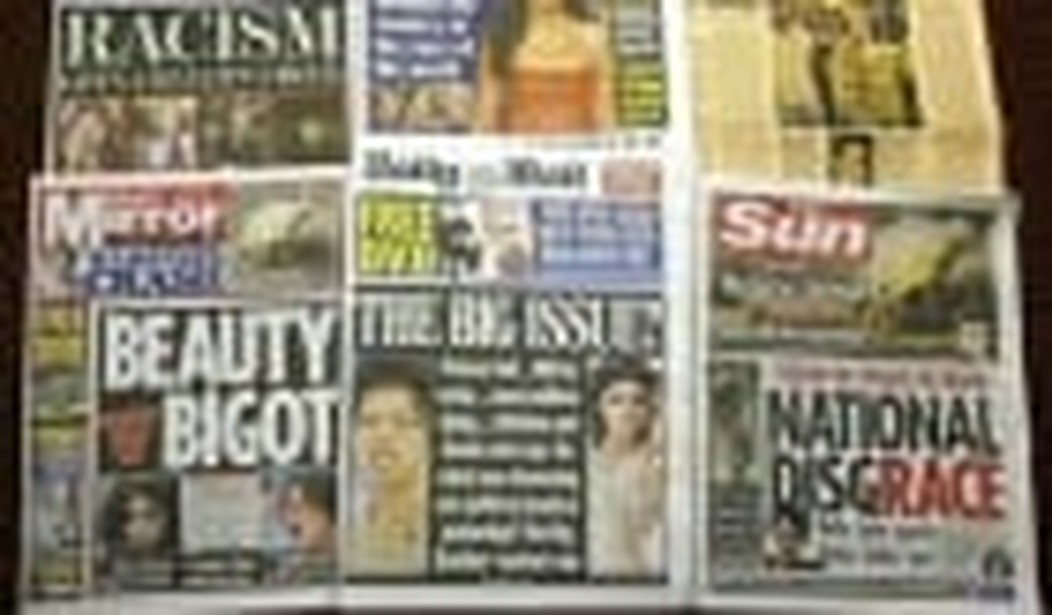As Old Media news outlets scramble to defend themselves against new online competition, they may be overlooking a more dangerous new threat coming from the Old World. For the first time since the Beatles, there is a British invasion. The last one transformed our music, this one may transform our news.
When you visit a news stand in London, you instantly sense you are in a different country. Unlike the 1 or 2 daily papers you would see in a typical U.S. city, you may be confronted by 8 or more. The front pages bristle with excitement and vie for your attention. They are engaged in heated competition, a concept that seems so foreign to newspapers in America.
You might ask, if the competition among London newspapers is so fierce, how can so many of them survive? Wouldn’t all readers naturally gravitate to the best couple of them, putting the rest out of business as happened in so many American cities decades ago? The reason so many survive is that they deliberately appeal to different target audiences, and differentiate themselves from the others largely on the basis of – are you ready for this? – BIAS. While in modern American journalism, “bias” is a four-letter word, mixing facts and opinion has never troubled papers in London. The British also do not share American journalists’ prudish disdain for “boobs” and humor. The differences in their intended target audiences is so obvious, even their front pages transparently appeal to those of different worldviews, socio-economic statuses, and tastes.
For just about any reader, London’s views-papers and boobs-papers make for a lot more enjoyable reading than America’¬ís dull fare. Their titles include the Morning Star (Far Left), the Guardian (Left), the Daily Mirror (Center-Left Tabloid), the Sun (Center ¬ìT & A¬î Tabloid), the Daily Mail (Center-Right Tabloid), the Times of London (Center-Right), the Financial Times (Center-Right Business), and the Telegraph (Right).
Using this as a key, you should now be able to follow this skit from the British TV comedy “Yes Prime Minister.”
Ironically, the London papers are simply using a business practice perfected in America ¬ñ “market segmentation.” The ideal product is one that is custom-made for each individual consumer, a luxury enjoyed only by the very wealthy in many categories. But, next best in a mass market economy is when companies divide their audiences into separate groups with similar interests, then design separate products to meet the special needs of each group. That’s what the London papers have done.
The market segmentation of news never happened in America because of a journalism movement launched a century ago by legendary thinker and editor Walter Lippmann. His Modern Journalism movement attempted to turn journalism into a science that would provide us with a pure stream of objective, verified truths. What readers wanted would no longer matter, as journalists would henceforth be “professionals” who, like doctors, could hold their own beliefs about best practices and resist the wrongful ideas of their amateur readers. Bias, sensationalism, titillation, and humor were to be viewed as contaminants. We were now to get a fact-laden, one-size-fits-all version of “the truth” presented in a serious, authoritative tone, whether we actually wanted it or not.
The British invasion ironically began in 1976, the bi-centennial of America’s Declaration of Independence from England, when Rupert Murdoch, owner of the London Sun and Times of London, purchased the New York Post, a paper founded by Alexander Hamilton. Using market segmentation, he transformed it into a tabloid for relatively downscale and conservative audiences. It is now the best selling weekday newspaper in the New York City area. Twenty years later he launched the Fox News Channel, applying market segmentation to cable TV news. He split a one-size-fits-all market dominated by CNN into one in which Fox attracts conservatives and CNN attracts liberals. With his recent acquisition of the Wall Street Journal, we should see more market segmentation, this time at the expense of the NY Times nationally and the Financial Times globally.
Now that Murdoch has proven that Americans have a taste for British news fare, the rest of the British are coming — not by land or by sea, but by web. Britain’s The Economist magazine has reported a US circulation increase of 16% vs. Time magazine’s 17% decrease. Online versions of the Guardian and Times of London have more American than British readers, and the Independent has twice as many. Just recently, the Guardian introduced an American edition.
London¬í’s viewsy, witty, and naughty newspapers now point to the future of news. America’s snoozy, prissy, and haughty papers had better wake up.
Steve Boriss blogs at The Future of News. He works for Washington University in St. Louis, where he is Associate Director of the Center for the Application of Information Technology (CAIT) and teaches a class called “The Future of News.”









Join the conversation as a VIP Member